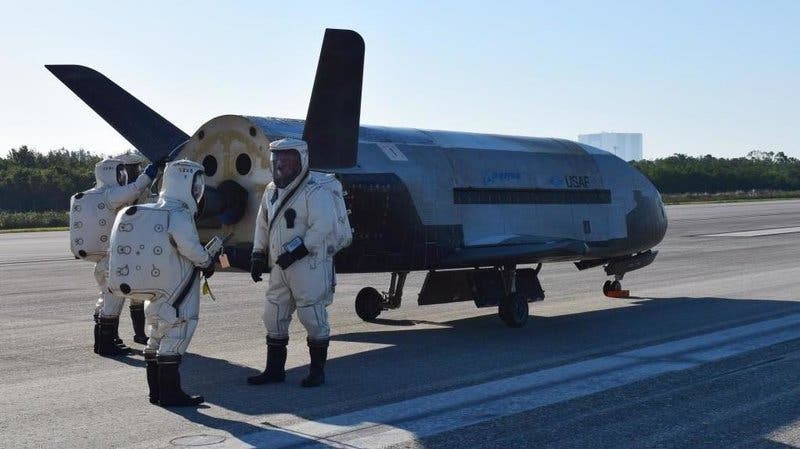After circling our planet for an unprecedented 718 days doing classified scientific experiments, an unmanned plane landed at the Shuttle Landing Facility at NASA’s Kennedy Space Center in Florida.

It was an unusual sight at the Kennedy Space Center — the first space plane to land there since Atlantis in 2011. People from Orlando and other places in Florida reported hearing sonic booms just like during the golden days of NASA’s space shuttle program, but this was a different kind of mission: a secret, military one.
It was one of the military’s two X-37 space plane vehicles. The Boeing X-37, also known as the Orbital Test Vehicle (OTV), is a reusable unmanned spacecraft which can launch vertically and land horizontally, but the more interesting feature is that it can fly for so long without a recharge. Officials were thrilled to see the plane intact and functioning properly.
“Today marks an incredibly exciting day for the 45th Space Wing as we continue to break barriers,” Air Force Brig. Gen. Wayne Monteith, the 45th SW commander, said in a statement. “Our team has been preparing for this event for several years, and I am extremely proud to see our hard work and dedication culminate in today’s safe and successful landing of the X-37B.”
So what exactly is the purpose of the X-37? Well… we don’t really know. The official U.S. Air Force statement is that the project is “an experimental test program to demonstrate technologies for a reliable, reusable, unmanned space test platform for the U.S. Air Force”. However, speculations have gone much further. Various allegations have been made, from delivering weapons from space to spying on China’s Tiangong-1 space station module. The Guardian suggested that its purpose was “to test reconnaissance and spy sensors, particularly how they hold up against radiation and other hazards of orbit,” while International Business Times stated that the U.S. government was testing a version of the EmDrive electromagnetic microwave thruster. However, all these claims were denied by The Pentagon and Boeing subsequently. While the mystery hasn’t really been explained, at this point, there’s little reason to doubt the claims of officials. It’s unlikely that the X-37 is doing something aggressive in space, but it is quite possible that it’s testing out sensors or other developing technologies — somewhere at the science-military border.
“Technologies being tested in the program include advanced guidance, navigation and control; thermal-protection systems; avionics; high-temperature structures and seals; conformal, reusable insulation, lightweight electromechanical flight systems; and autonomous orbital flight, re-entry and landing,” Capt. AnnMarie Annicelli, an Air Force spokeswoman, told Space.com via email in March. “Also, the Air Force Research Laboratory (AFRL), Space and Missile Systems Center (SMC), and the Air Force Rapid Capabilities Office (AFRCO) are investigating an experimental propulsion system,” she said.
It’s certainly a bit unnerving that we’re already toying with the idea of militarizing space, especially given the scale of such projects. Military space programs “are as big as NASA,” astrophysicist and astronomer Jonathan McDowell told NPR’s Here and Now back in 2015, when X-37 started this mission. McDowell also said that at this point, there are at least 20 “full-fledged spy satellites or other really secret vehicles” orbiting the Earth and that’s a scary thought.
This was the fourth and lengthiest mission from the project, also notable for the plane’s autonomous landing. It’s unclear what the project’s further objectives are. The US Air Force has at least confirmed that they are actively researching reusable space vehicles and establishing a space test platform for themselves.


